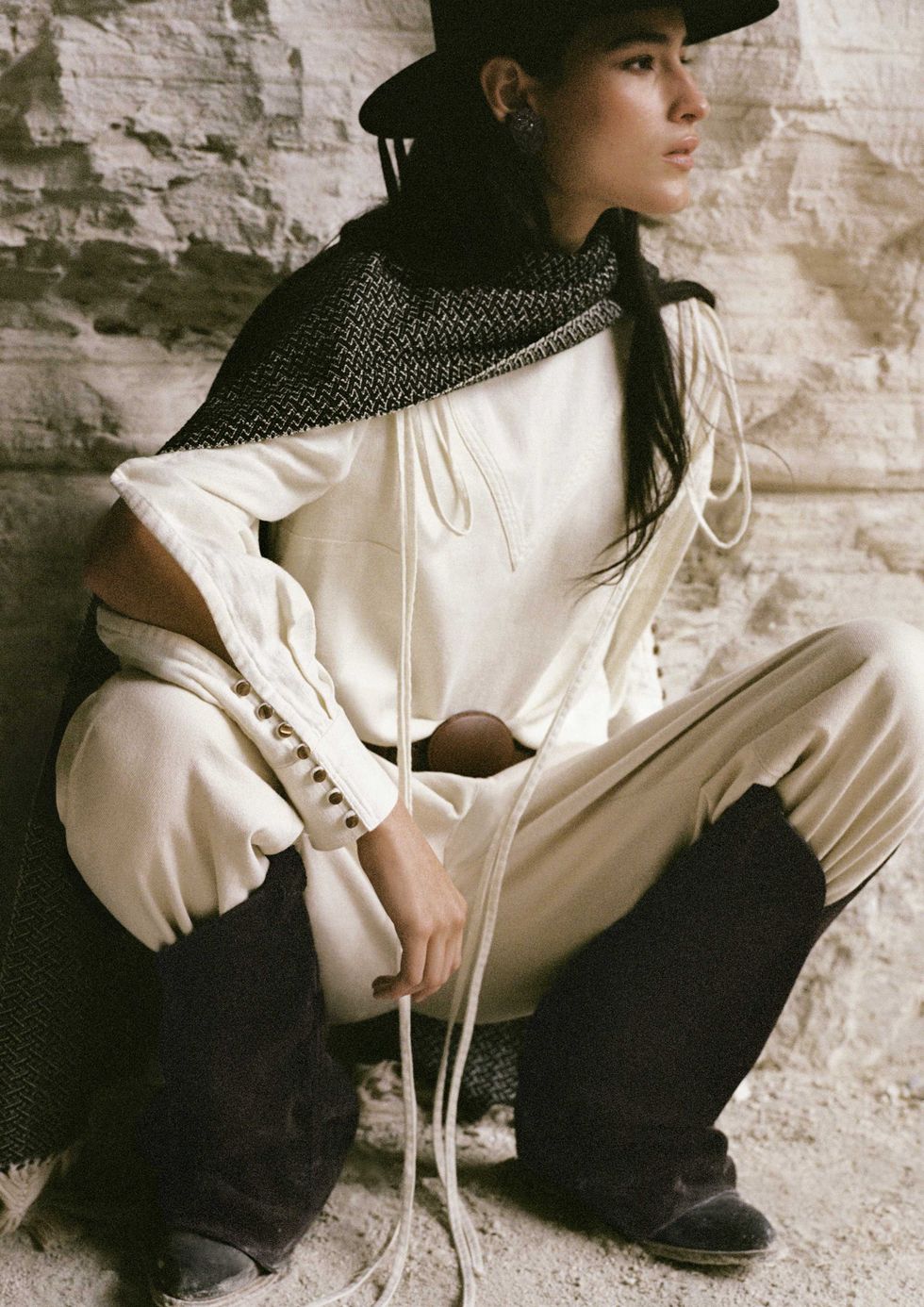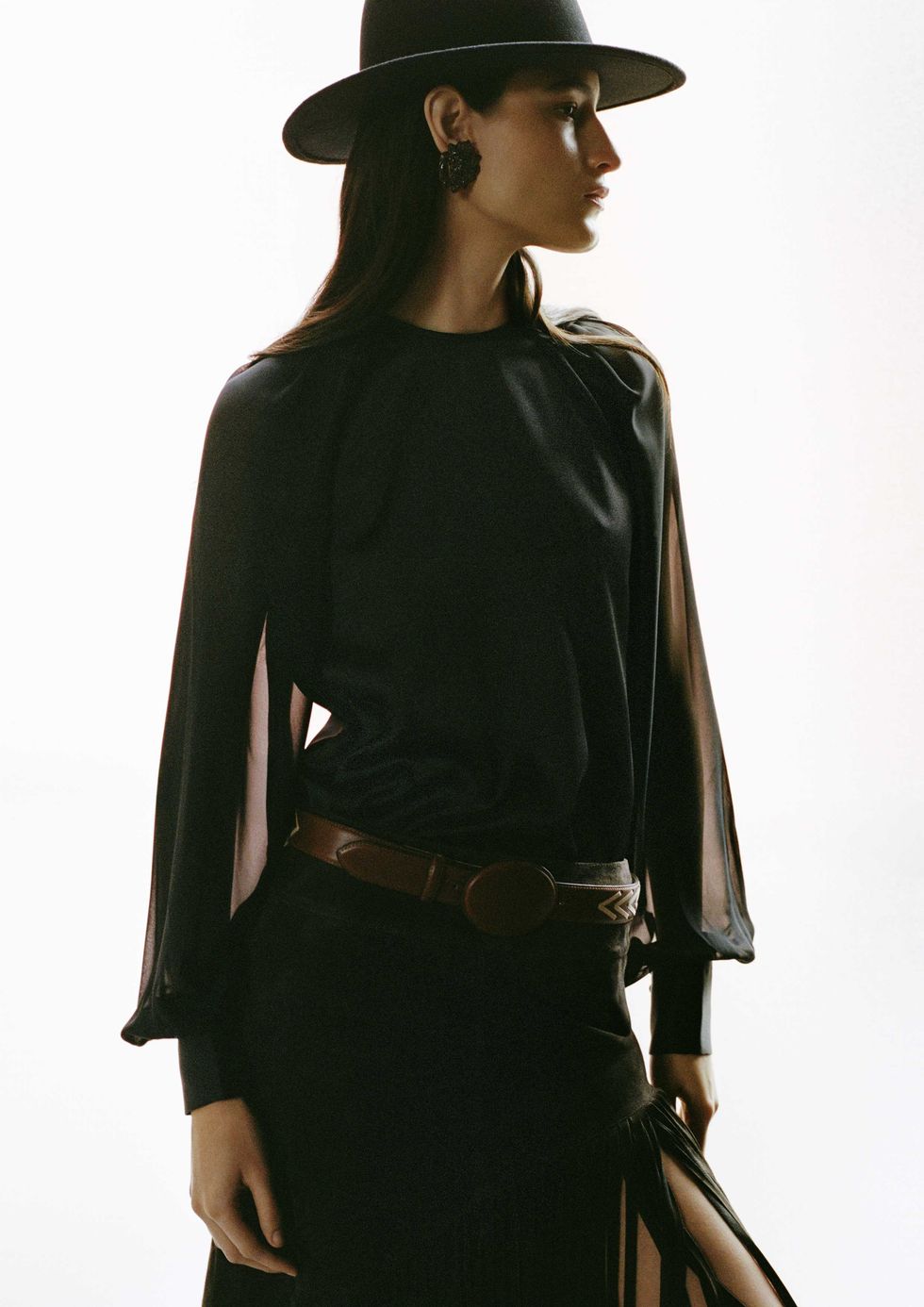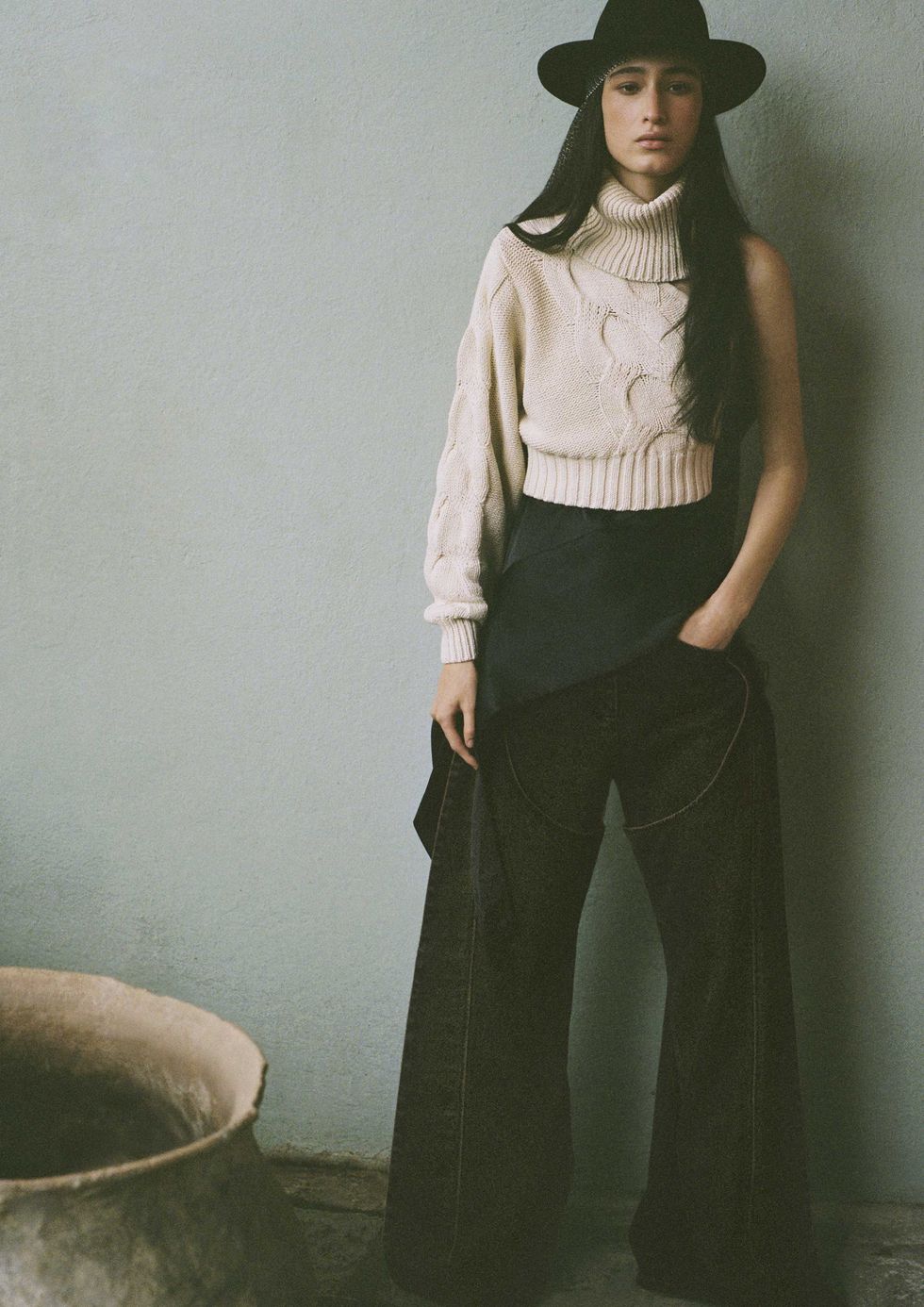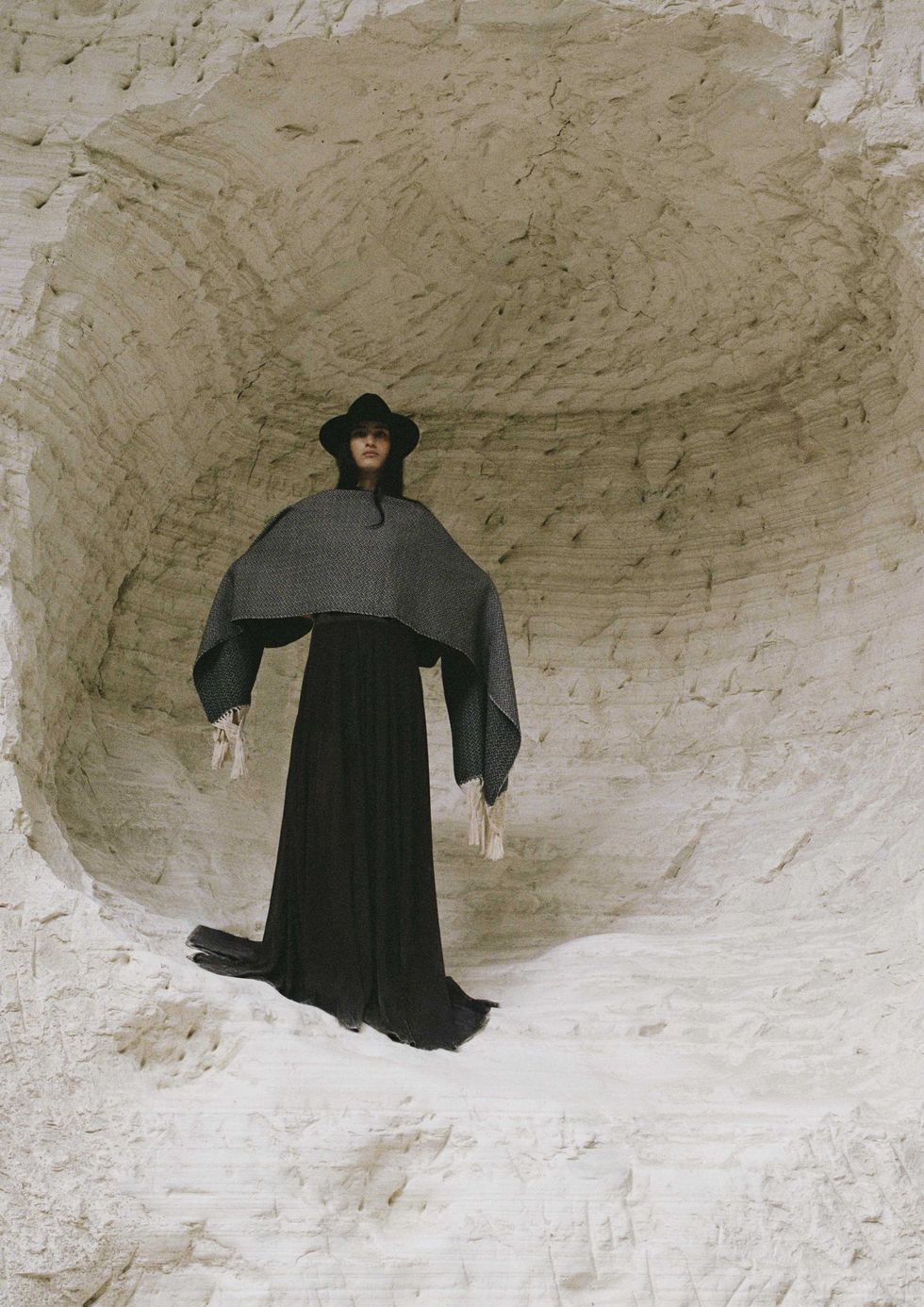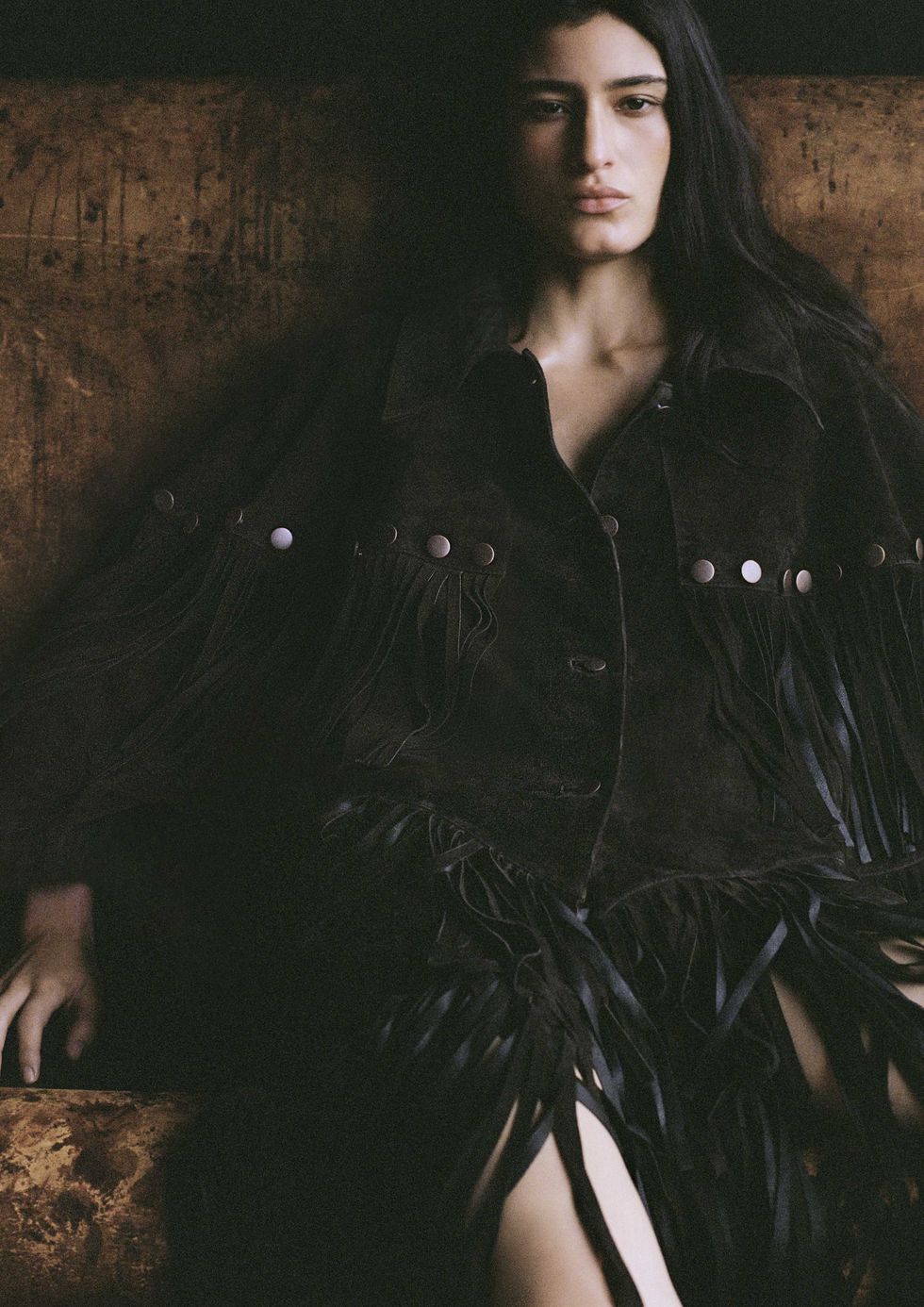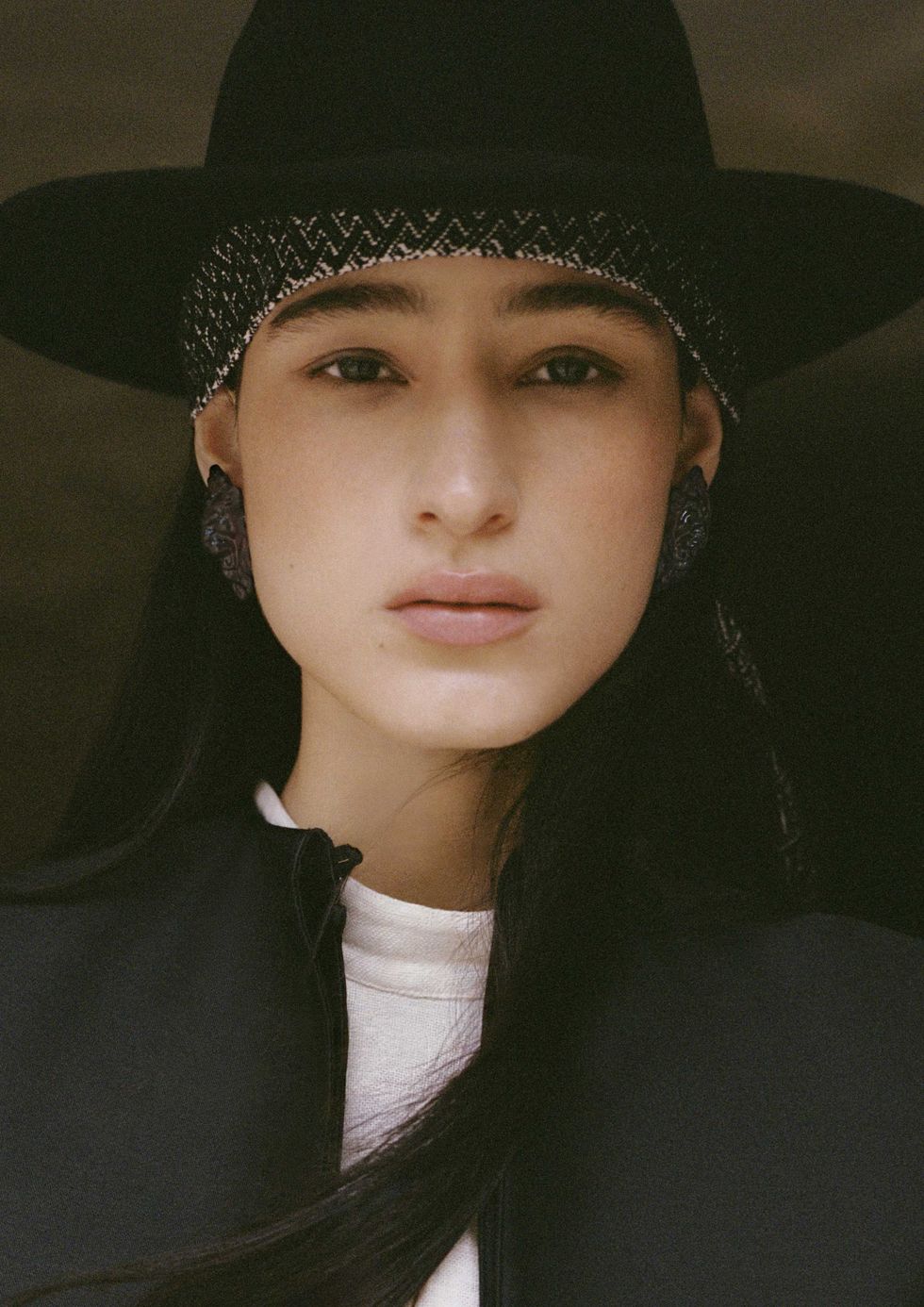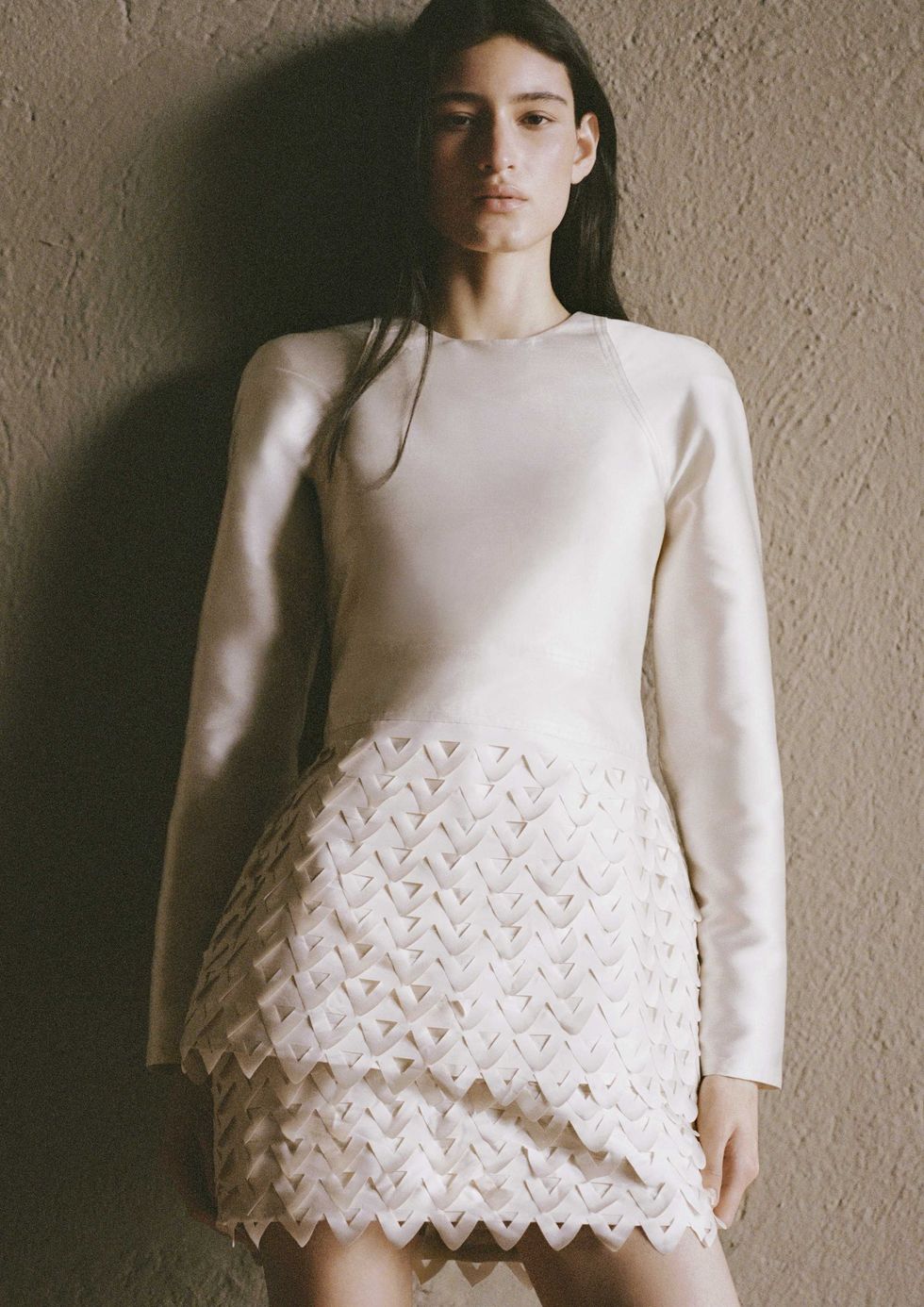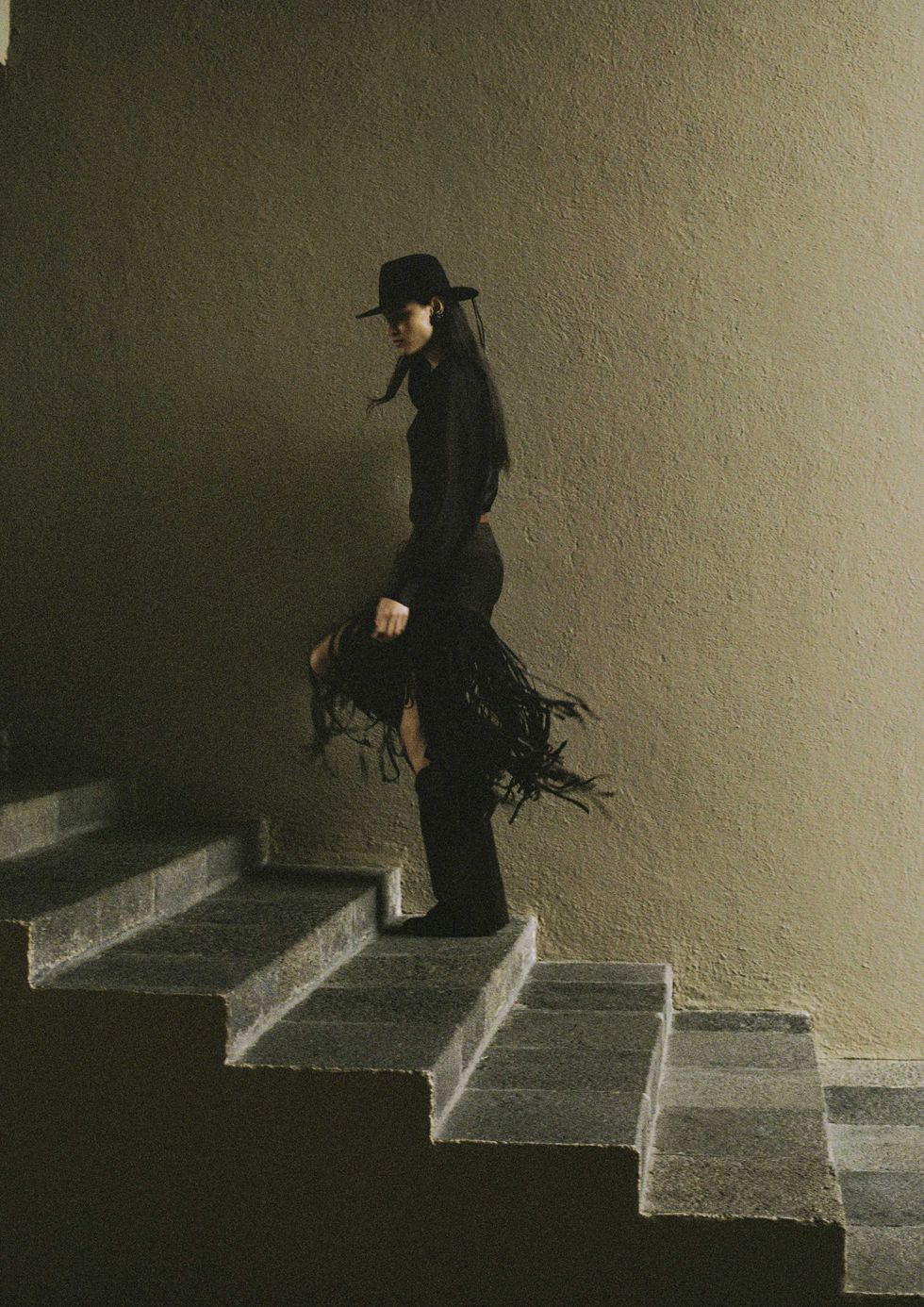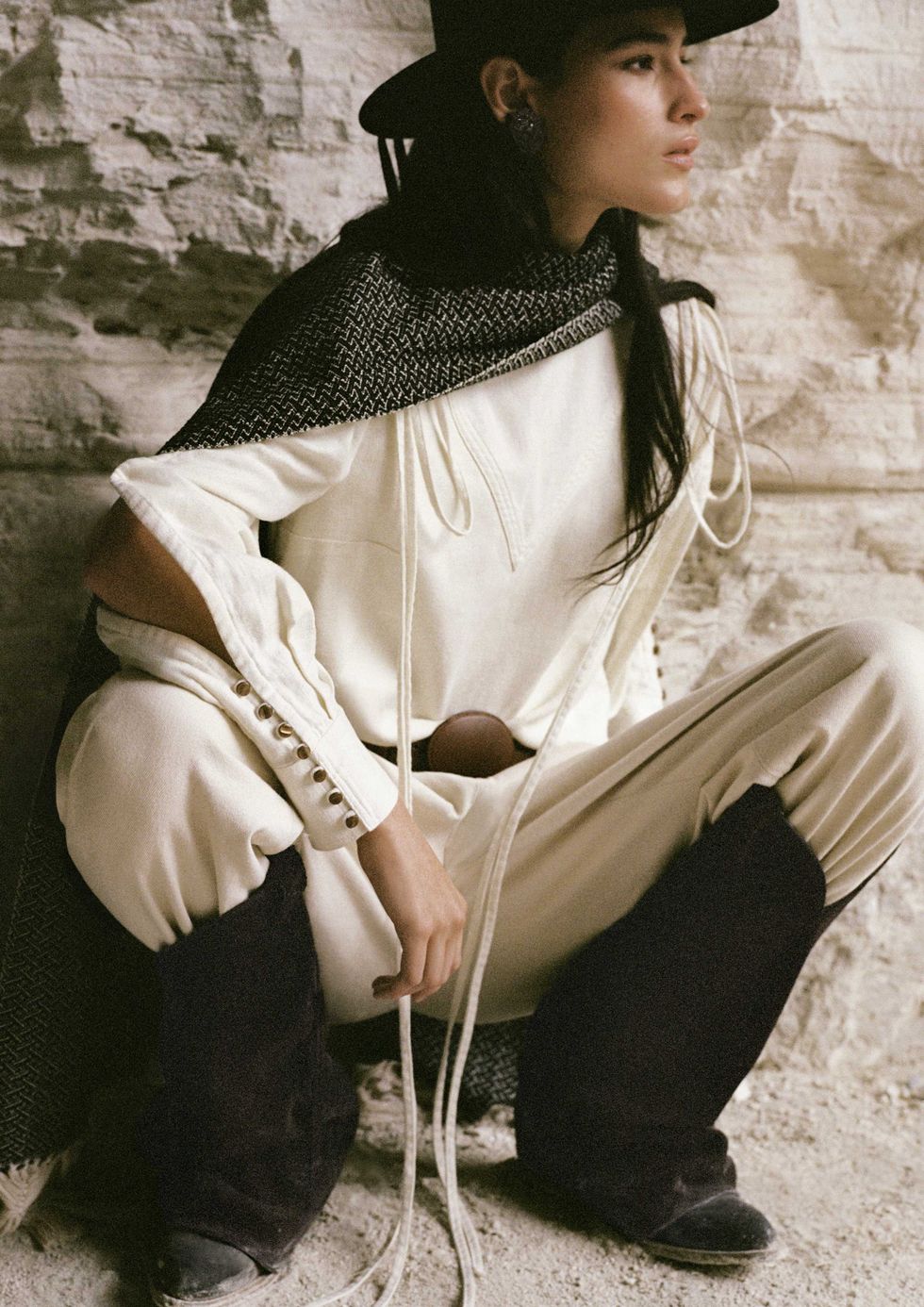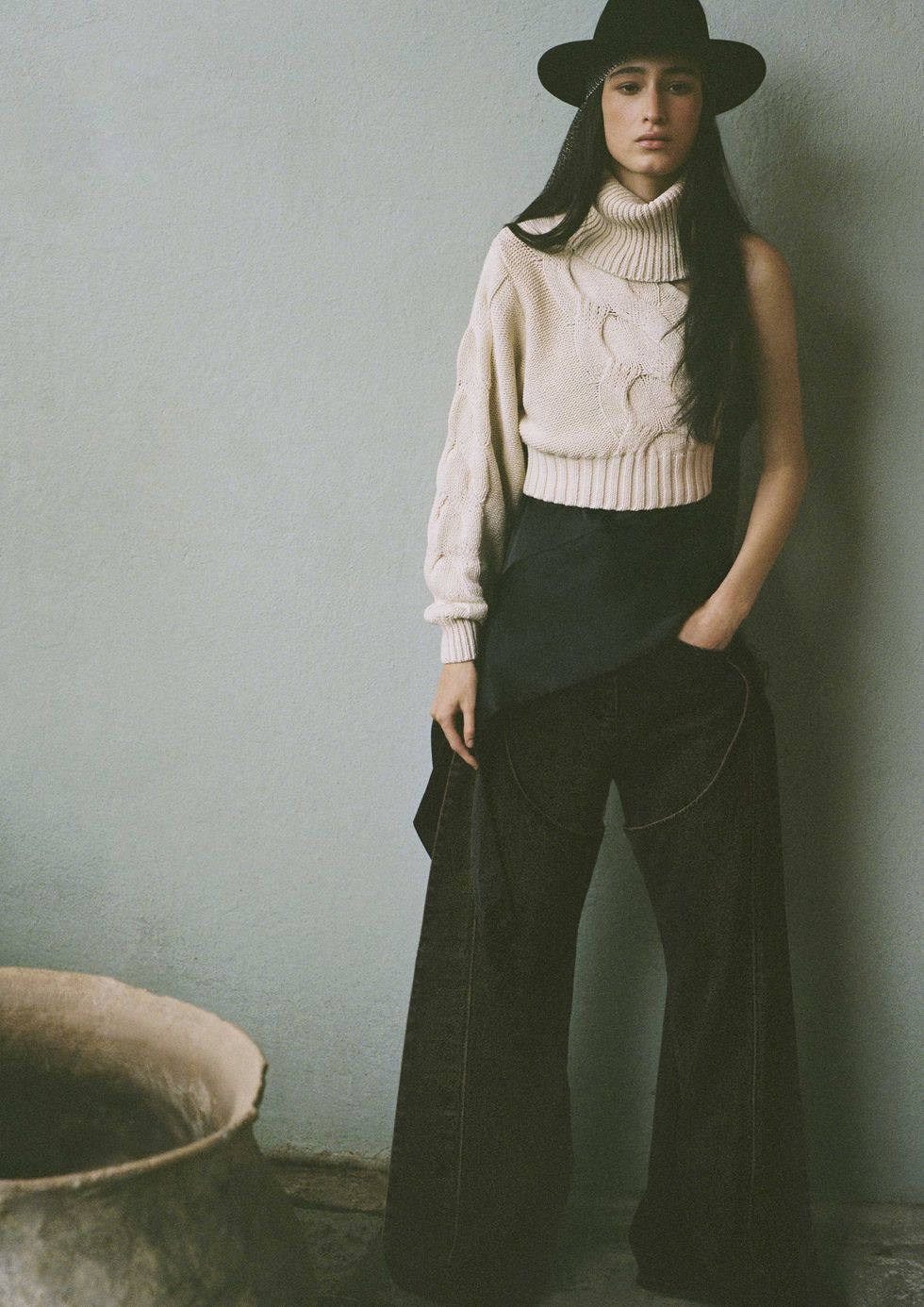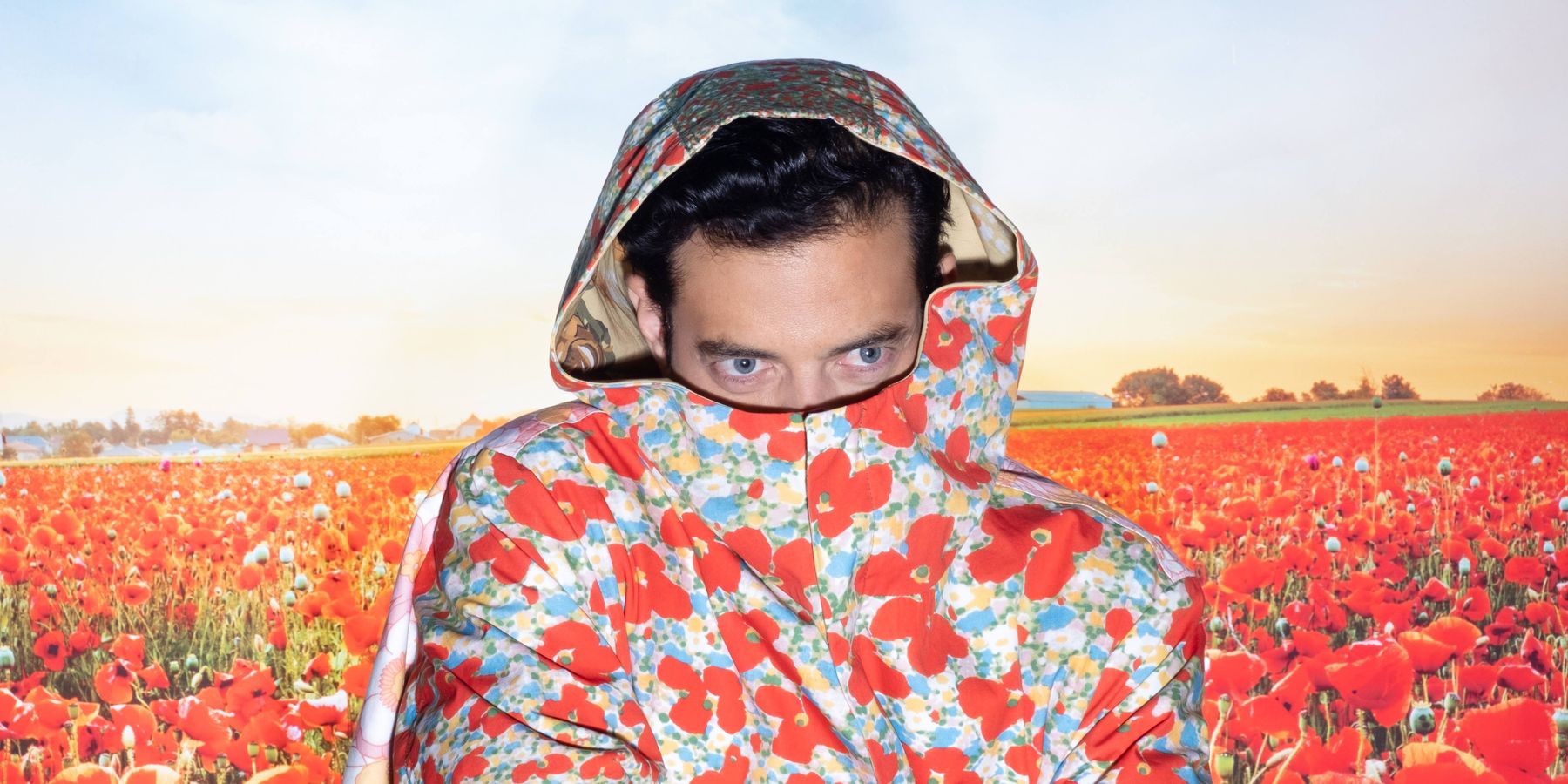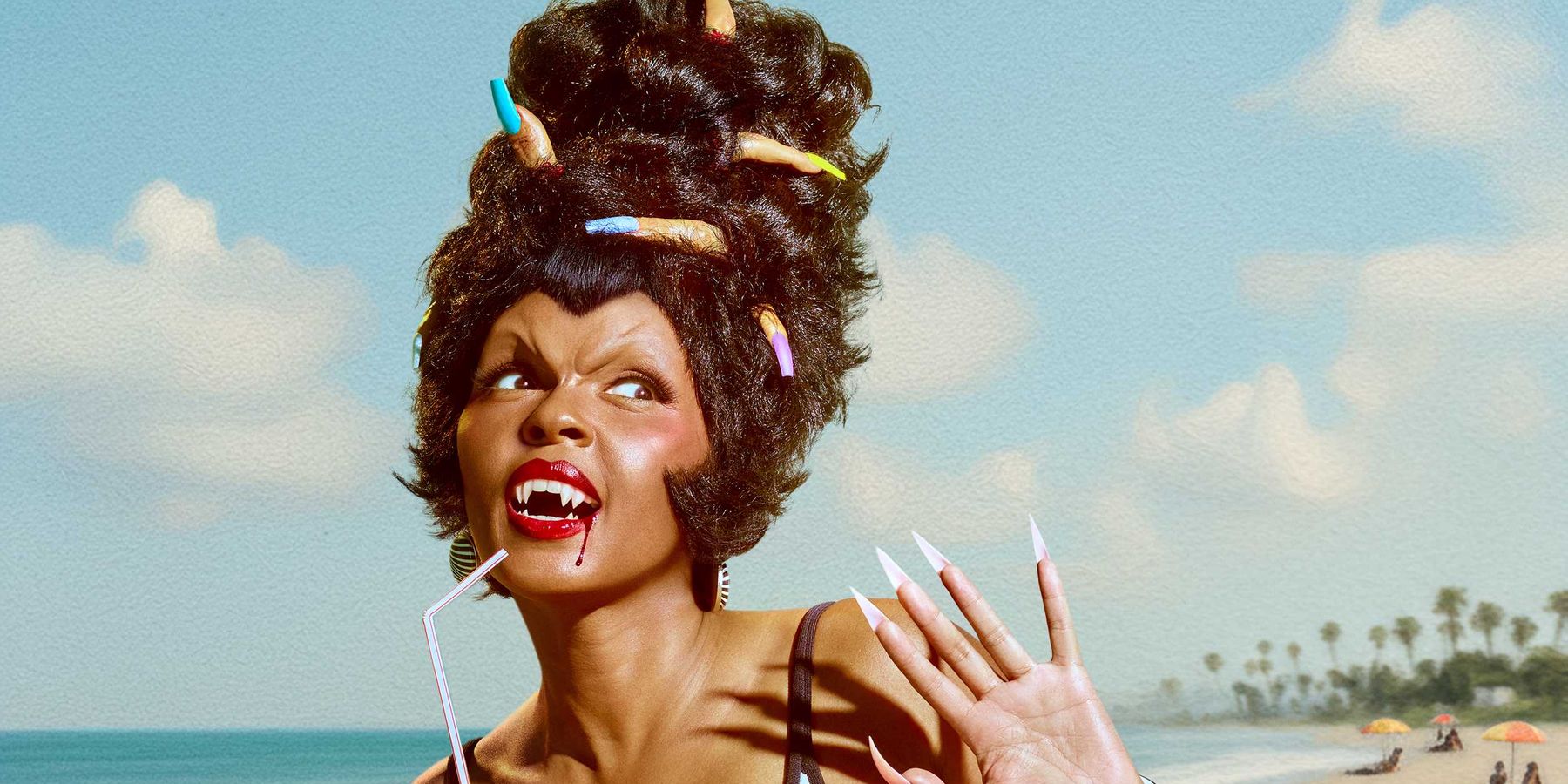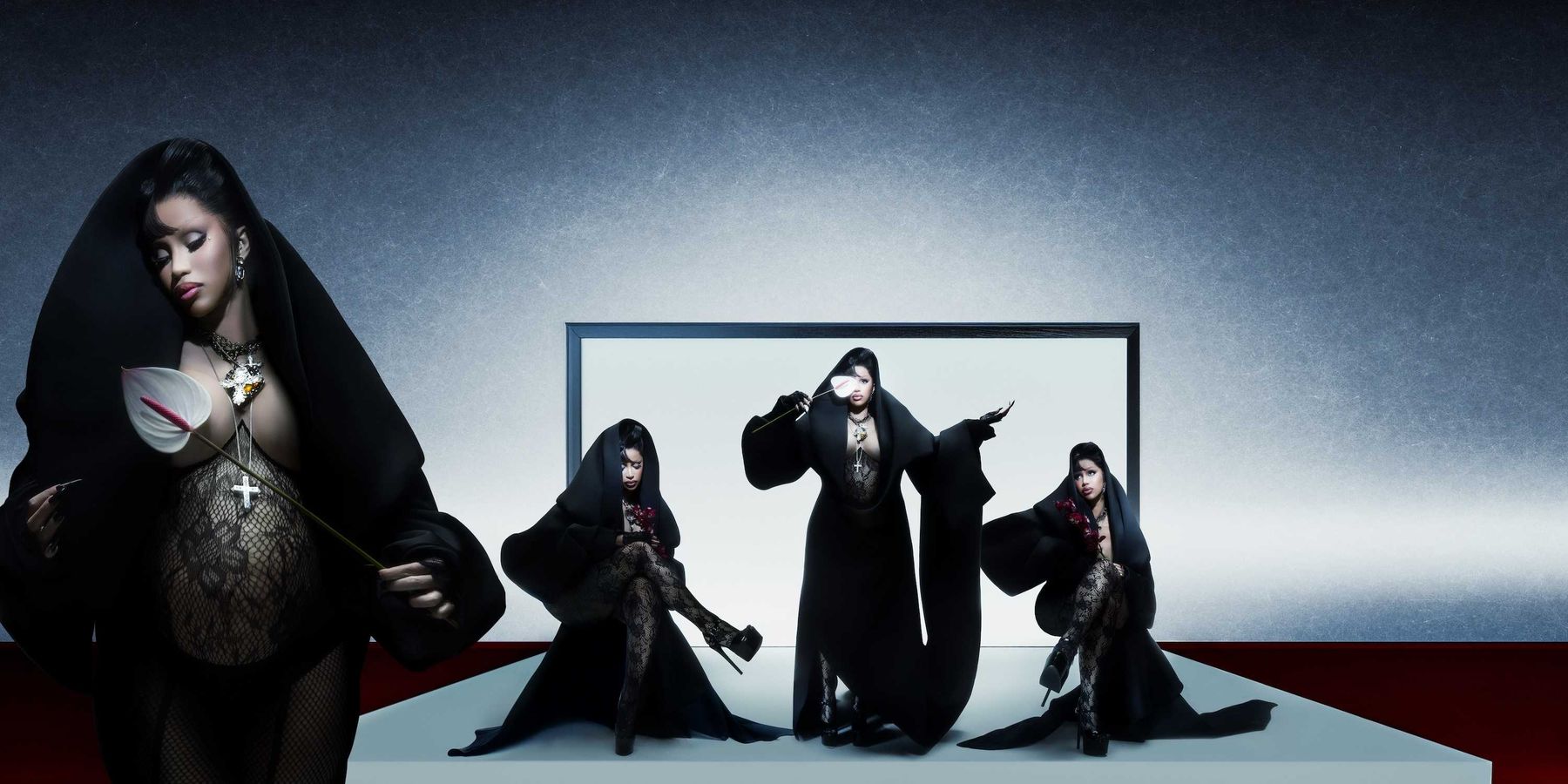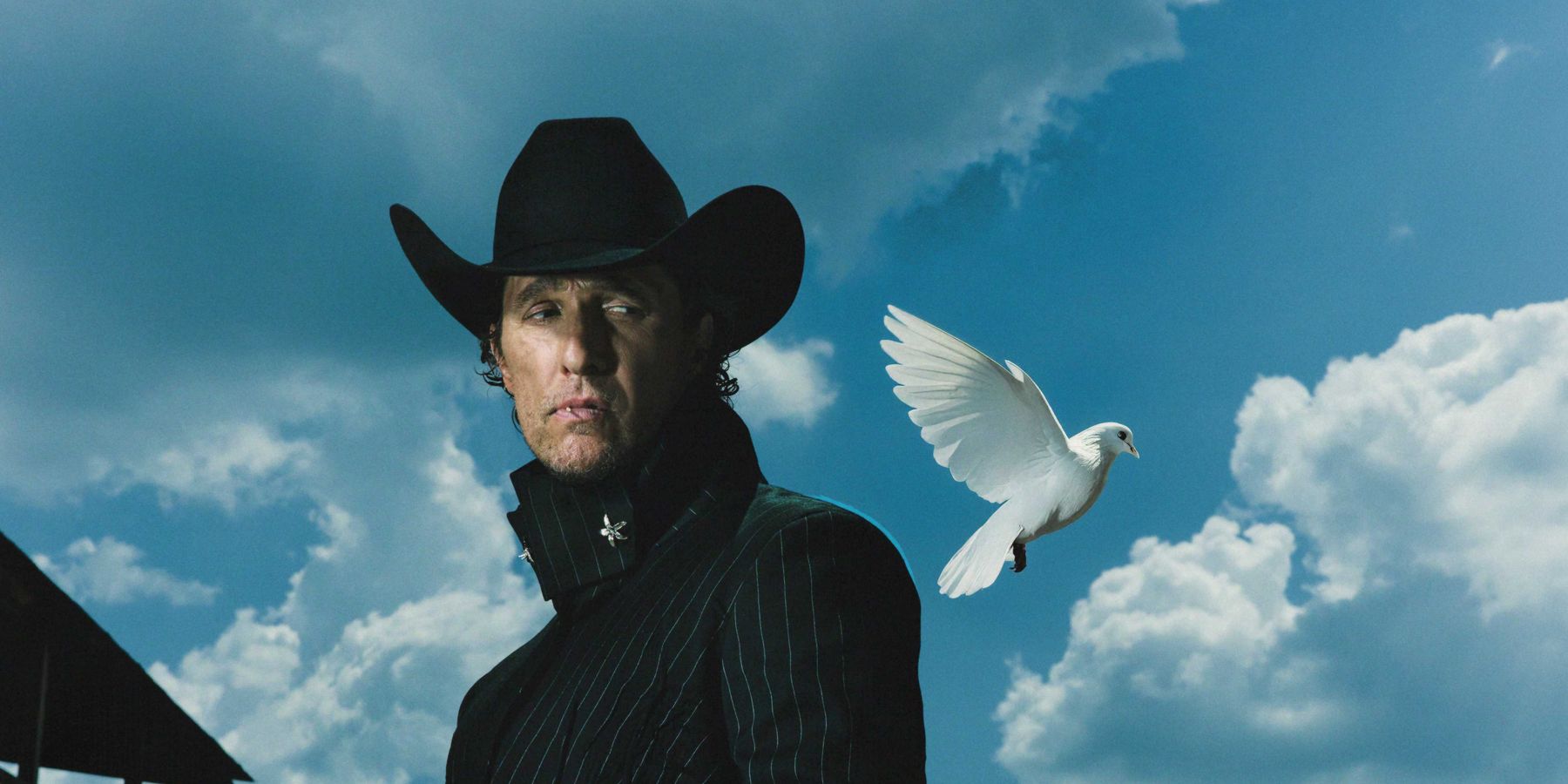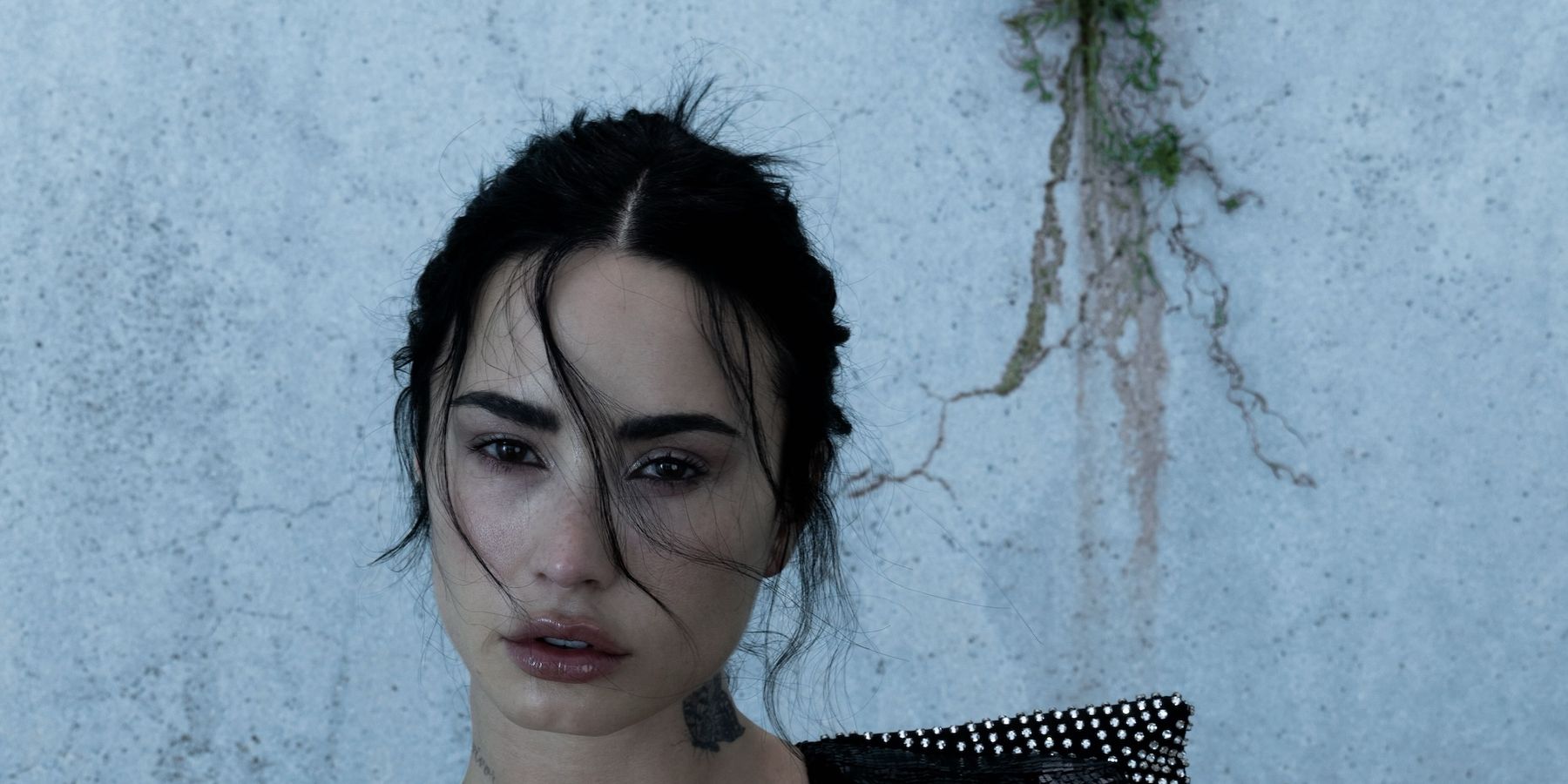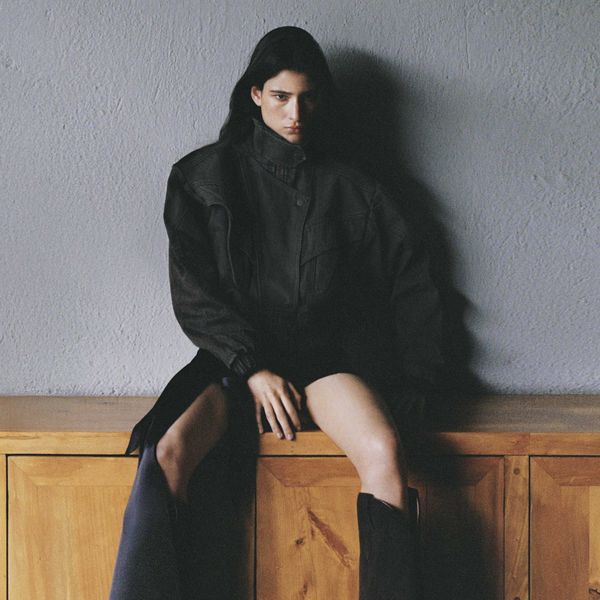
Lorena Saravia Brings Mexico's New Generation to H&M
By Ivan Guzman
Oct 17, 2025For Lorena Saravia, it’s all about the women in her life. Her grandmother, who taught her to sew; her mother, who passed down an instinct for detail; the generations of Mexican women whose values thread their way through every garment she designs. Those same women, and the quiet power they represent, are the soul of Lorena Saravia x H&M, a collaboration that marks not only a career milestone for the Mexico City-based designer, but also the first time H&M has partnered with a Mexican creative.
The collection, shot against the mineral light and sculptural landscapes of Mexico, captures what Saravia describes as a contemporary Mexico — one grounded in craftsmanship but defined by modern femininity. There are tailored jackets, crisp denim and leather silhouettes that nod to her family’s ranching roots, reimagined with clean lines and architectural precision. A pair of lion-shaped earrings, inspired by her grandmother’s own jewelry, becomes a symbol of continuity: an heirloom reborn for a new generation.
Saravia wanted the collection to move beyond the typical symbols often attached to Mexican design, to show the country as she knows it: innovative, forward-looking and full of strong women. Her goal, she says, was to channel the values she grew up with — family, tradition, craft — into timeless pieces that could live in anyone’s closet, anywhere in the world. “We wanted to show a contemporary Mexico,” Saravia tells PAPER. “The artisanal side is beautiful, but there’s also this other part: the women of today.”
For H&M Head of Womenswear Ann-Sofie Johansson, that balance is what makes this collaboration historic. “Fashion is a craft,” Johansson says. “It’s about the hands behind the work, and making that work accessible to more people.” Together, the partnership reflects a global fashion house meeting a deeply local perspective — one that honors process, emotion, and storytelling as much as style.
In a landscape often dominated by European houses, Lorena Saravia x H&M feels defiantly personal: a love letter to heritage, resilience and womanhood. It’s a celebration of where Saravia comes from, and a promise of where Mexican design is heading next.
PAPER caught up with Lorena Saravia and H&M Head of Womenswear Ann-Sofie Johansson to talk about the women who shaped her, the power of craft, and what it means to make fashion that endures.
I know this is H&M’s first collaboration with a Mexican designer, but how did you want Mexico to feel in the clothes? What emotion or atmosphere did you want to translate beyond the motifs or design references?
Lorena Saravia: I think mainly we wanted to show a contemporary Mexico. There’s a lot happening right now — in the food, the art, the music — and we’re part of a new generation of designers creating an industry with beautiful pieces and messages to offer the world. I think our main goal as a collaboration was to create something that showed this contemporary Mexico. The artisanal side is beautiful, of course, but there’s also this other part: the women of today. As Mexicans, we’re part of a community of strong women, and that’s part of the brand’s DNA. So pushing that message globally through this collaboration really made sense.
Was there a particular image, song or memory that you kept in mind while designing? Something that grounded the collection in a mood rather than a map?
Lorena: It was really about the values of Mexican heritage — the values of family, tradition, craftsmanship and process. The artisanal techniques we have in Mexico, whether in food, art or garment construction, are so rich and varied, and we wanted to honor that. These are values we carry in our families, things we pass down through generations.
That’s what we wanted the collection to represent: Mexico in a timeless way, with a timeless essence and DNA. Of course, when you see the full collection together, you get this earthy, ranch-inspired, cowboy feeling. But when you separate each piece, it speaks to women all over the world. You can wear the leather jacket with jeans and sneakers and it becomes part of a contemporary woman’s wardrobe. Or maybe you’re 55, a mother with a social life — it still fits in your closet.
It was beautiful to work that way with the H&M team, who obviously have all the experience of democratizing fashion and getting into many women’s closets. Combining those two stories, the Mexican tradition and H&M’s global reach, created a really contemporary, beautiful result.
I know your grandma taught you to sew, right? My grandma used to sew, too. She used to make my pajama pants. My grandpa had a ranch, so I feel like that’s all very…
Lorena: Mexican. We’ve lost that, no? But you have those beautiful memories of your grandmother.
Yeah, my mom doesn’t know how to sew, but she just bought a sewing machine because she wants to learn, like how my grandma did. So it’s passing it down.
Lorena: Yes, exactly. And I think with the phone and all this information, we’ve lost what we used to do — the handwork, even playing cards, right? I think this collection is also an homage to tradition. We wanted to pass something on to new generations, to emphasize and focus on what really matters: those values. And I think we had the same vision as teams. We worked as one on that.
Ann-Sofie Johansson: And also, fashion is not just a sketch or something glamorous. It’s a craft. People sometimes forget that, or they don’t really understand it. To be able to show everything that goes into the making of a collection or a garment — that’s a lot of work.
Yeah, walking back where the sewers are, it’s like that’s where the real skill lives.
Lorena: Yes, exactly. There’s a craft to it. You have to manually construct each piece. The first one, you literally build it by hand to see how it fits and moves in real life. Especially with these kinds of garments, it’s so important to understand the pattern and how it all comes together.
Anne-Sofie: Yes, it’s such a tangible thing. And the more digital we become (and we already are), the more important it is to show the craft, the hands behind the work, and to preserve that manufacturing process.
Yeah, with fast fashion…
Lorena: Yes. And I think that makes a difference when something sells — when you put that energy and the correct essence into it. It might sound mystical in a way, but it really does make a difference. You transmit the story into the collection, and into each garment, and that makes people feel something personal.
We also tried to make that story understandable, to help people see the details we created together as a team: the buttons, the cuts, the stitching, the lace, the denim details. Everything was thoughtfully made through a process that was really hands-on and artisanal. We created something that elevated the collection in a beautiful way.
H&M has done global collaborations, but this one feels genuinely local. It’s shot in Mexico City, it’s launching here. What shifted in H&M’s mindset to make this kind of partnership possible now?
Anne-Sofia: One thing is that you can find creativity and fashion everywhere. It doesn’t just come from the big houses in Paris or Milan. This is a way for us to show that and to open up the world a bit for our customers. You can find fashion in Mexico, in Korea. We’ve also done collaborations with local designers in Korea and India, for example.
It’s one way for H&M to be a little more local where we can, instead of always being a big global company. But most of all, it’s about finding brilliant designers — it doesn’t matter where they come from — and collaborating with them. That’s what we aim for. It’s also a twist on the idea of collaboration, making it more local and authentic.
Lorena was just a perfect match. H&M and Lorena together made so much sense. From the very beginning we felt it would work. When our teams met, we shared the same vision for what we wanted to achieve, and that’s how this beautiful collection came to life.
Even with Gen Z (if H&M is targeting younger audiences) it feels like they’re moving away from fast fashion. They want authenticity, something tangible and analog, like “back to the ranch,” actually doing things with their hands.
Anne-Sofia: Exactly. And that’s part of telling fashion history, too. Every collaboration becomes a part of fashion history in its own way. We haven’t worked with Jean Paul Gaultier, for example, but these kinds of partnerships still write history, presenting niche or smaller design worlds to a wider audience. That’s what H&M can do.
We’re a big company with real responsibilities, but younger generations today want to know the story — to see the design, to feel the authenticity. They buy secondhand, they understand quality. With every collaboration we’ve done, the pieces go on to have more than one life: ending up in vintage or resale shops, sometimes selling for even higher prices later. That’s what happens with well-made garments: they endure. So in a way, we’re designing future vintage pieces.
Yeah, thinking about it being in a vintage store in 20 years…
Lorena: Exactly. For me, the collaborations with H&M are like pieces of jewelry you’ll never find again. For example, I still have pieces from the Lanvin collaboration stored in my closet — with the original paper bag and hanger — because I know I’ll never find something like that again. You can buy from the brand, or from H&M, but putting them together creates something truly special. It won’t ever happen again.
Anne-Sofie: It’s really a present to our customers. That’s what we always say about collaborations. They’re gifts. We want to make it possible for more people to buy something from Lorena that they might not have been able to before, since we can offer different price points. It’s one way of liberating fashion for more people. That’s really the whole idea behind our collaborations: accessibility.
Yeah, it’s a perfect mix. I feel like a lot of Mexican fashion or new designers get stuck in this folkloric or traditional lane, which is beautiful, but you’re fusing that with something futuristic and Western. I love it. I know your grandma’s earrings inspired the lion earrings in the collection, but was there another specific memory from your childhood with her that came to mind while designing?
Lorena: Yes. You can see the buttons on the beige pieces. We recreated the same ones my mom used to have in her sewing machine. Maybe you remember this too. My grandmother had this big bag full of buttons.
My grandma had one too.
Lorena: Exactly! They were full of these orange and colored buttons. I still have that bag in my office. When we started constructing the collection and I was explaining to the team what was behind the brand and why, I began showing them all these little details from my grandmother.
You saw my office, right? It’s covered in family photos. I have this huge addiction to them — pictures from as far back as the 1920s. Even when my grandfather passed away, he left a note on a box that said, “All the photographs go to Lorena.” Because people might have thrown them away, but I think it depends on where you are in life. You can always find new meaning in photographs.
I take them out often, look at them again, and discover something new. Recently, I was planning a trip to Barrancas del Cobre — these massive mountains in Chihuahua — and I realized my ancestors, the Tarahumara, came from there. So I started creating that connection. Those photographs are a huge inspiration for me because they always reveal new messages.
Today, we’ve lost that. Everything’s on our phones, and we don’t print anything anymore. I worry about that, about what future generations in my family will have to look at. My mom recently handed me a box of my childhood photos and said, “This is your archive.” I think my grandmother was trying to do that for us — to make sure we never forget where we come from.
If you look closely in my office, there are photos of my mom and my aunts all dressed in the same matching little dresses my grandmother made herself. There were five kids, so she’d sew them something simple, fast, not perfect at all. When you turn one of her garments inside out, it’s chaos, but that’s the beauty of it. She created these things for the family.
For me, it was important that this collection showed those same values: tradition, family, Mexican heritage — things we tend to forget as time passes. What will the new generations look to when they grow up? A lot of the pieces in the collection are inspired by those memories, by garments my aunts wore, by the ski suits my family had. Every piece carries a story about what Mexican family values and tradition really mean.
From Your Site Articles
Related Articles Around the Web
MORE ON PAPER
Entertainment
Rami Malek Is Certifiably Unserious
Story by Joan Summers / Photography by Adam Powell
Story by Joan Summers / Photography by Adam Powell
14 November
Music
Janelle Monáe, HalloQueen
Story by Ivan Guzman / Photography by Pol Kurucz/ Styling by Alexandra Mandelkorn/ Hair by Nikki Nelms/ Makeup by Sasha Glasser/ Nails by Juan Alvear/ Set design by Krystall Schott
Story by Ivan Guzman / Photography by Pol Kurucz/ Styling by Alexandra Mandelkorn/ Hair by Nikki Nelms/ Makeup by Sasha Glasser/ Nails by Juan Alvear/ Set design by Krystall Schott
27 October
Music
You Don’t Move Cardi B
Story by Erica Campbell / Photography by Jora Frantzis / Styling by Kollin Carter/ Hair by Tokyo Stylez/ Makeup by Erika LaPearl/ Nails by Coca Nguyen/ Set design by Allegra Peyton
Story by Erica Campbell / Photography by Jora Frantzis / Styling by Kollin Carter/ Hair by Tokyo Stylez/ Makeup by Erika LaPearl/ Nails by Coca Nguyen/ Set design by Allegra Peyton
14 October
Entertainment
Matthew McConaughey Found His Rhythm
Story by Joan Summers / Photography by Greg Swales / Styling by Angelina Cantu / Grooming by Kara Yoshimoto Bua
Story by Joan Summers / Photography by Greg Swales / Styling by Angelina Cantu / Grooming by Kara Yoshimoto Bua
30 September
Music
Demi Lovato Is No Joke
Story by Ivan Guzman / Photography by Jason Renaud / Styling by Chris Horan/ Makeup by Loftjet / Set design by Allegra Peyton
Story by Ivan Guzman / Photography by Jason Renaud / Styling by Chris Horan/ Makeup by Loftjet / Set design by Allegra Peyton
15 September
